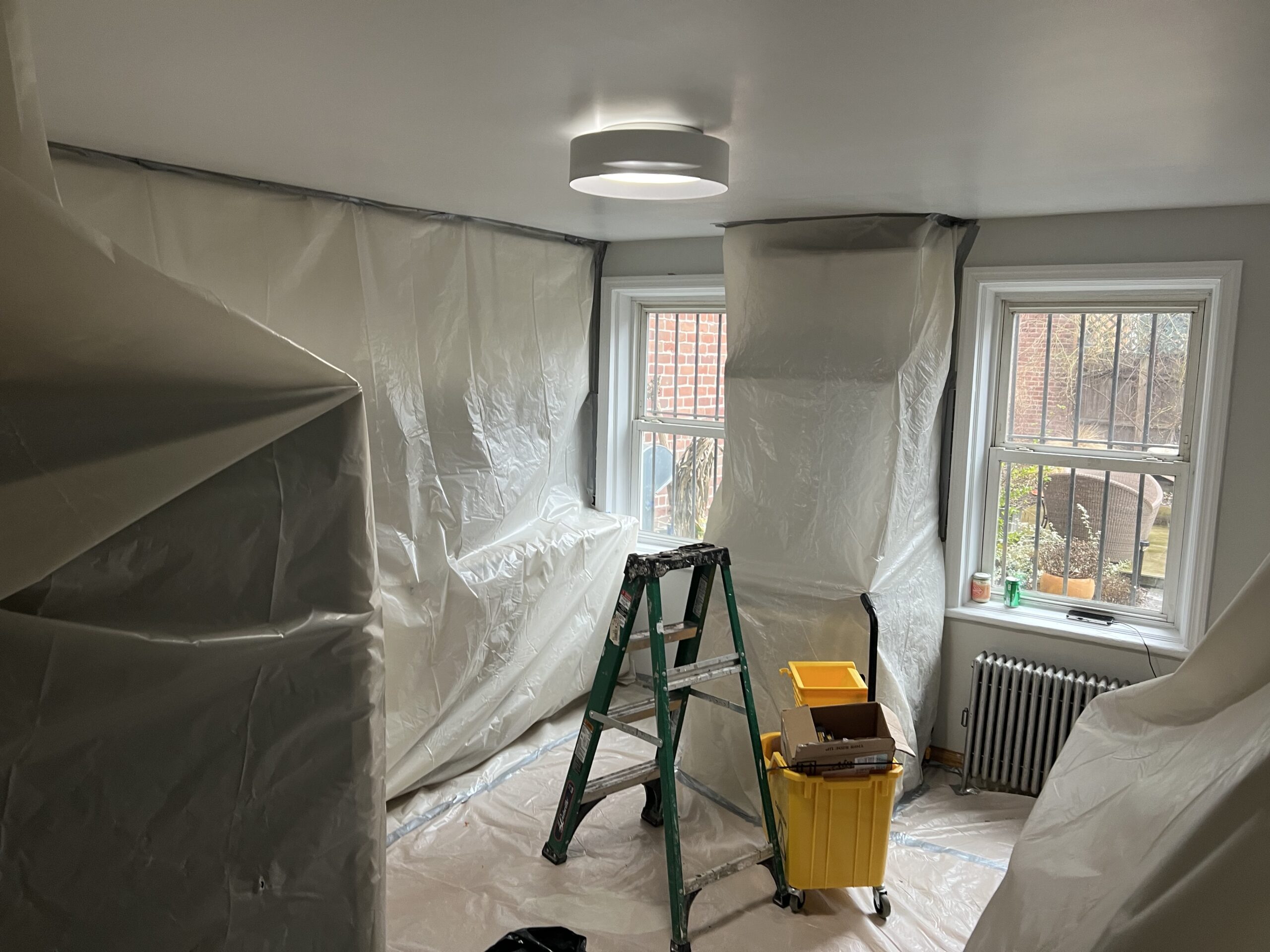Best Practices for Making Certain Safe and Extensive Lead Violation Abatement
Addressing lead infraction reduction requires a multi-faceted method to ensure both security and conformity. Initial evaluations making use of sophisticated discovery methods such as XRF analyzers established the phase for an accurate understanding of contamination degrees. Including proper control strategies, consisting of closed obstacles and HEPA purification, coupled with using individual protective devices (PPE) for employees, creates the backbone of a safe procedure. Meticulous clean-up procedures, including HEPA vacuuming and wet-wiping, are essential. It's the last clearance process, involving extensive assessments and lab screening, that absolutely validates a lead-free environment, guaranteeing long-term safety. How do these methods adjoin to assure thorough lead reduction?

Initial Analysis
Performing a preliminary assessment is an essential very first step in lead offense abatement. This phase includes a comprehensive evaluation of the property to determine the presence, degree, and details places of lead-based risks. Certified specialists, such as licensed lead examiners or risk assessors, must execute an extensive website assessment, utilizing devices like X-ray fluorescence (XRF) analyzers to accurately find and measure lead concentrations in paint, dirt, dirt, and water.
The evaluation has to likewise consist of a review of the building's background, previous records, and any issues or health problems reported by owners - Lead Removal Contractors. Documenting the searchings for meticulously is vital, as these documents create the basis for establishing a reliable abatement technique. A comprehensive evaluation also entails tasting and laboratory analysis, which are important to validate the presence of lead and overview subsequent actions
Additionally, it is essential to interact the outcomes transparently to all stakeholders, consisting of homeowner, occupants, and governing authorities. By making certain that the initial assessment is conducted with precision and rigor, professionals can lay a solid foundation for a targeted and effective lead abatement process, eventually protecting public health and wellness and making sure conformity with regulative requirements.
Appropriate Containment
Appropriate control is crucial to stop the spread of lead contaminants during abatement tasks. Properly taking care of control lessens the danger of lead dust and debris migrating to non-work locations, consequently securing both the setting and people outside the instant work zone. To achieve correct control, a closed barrier of plastic sheeting must be developed around the workspace, guaranteeing all joints and edges are securely secured. Lead Removal Contractors. This barrier needs to extend from floor to ceiling and be taped to protect against any type of leaks.

Regular examinations of the containment location are required to examine for breaches or weak points in the barrier. Any kind of determined concerns ought to be promptly dealt with to preserve the integrity of the control. By sticking to these practices, reduction projects can successfully control lead contamination and alleviate associated health and wellness threats.
Worker Defense
Making sure worker security is paramount during lead reduction tasks to stop job-related exposure to dangerous lead fragments. Important actions include using individual protective devices (PPE) such as respirators, handwear covers, and full-body suits specifically created to obstruct lead dirt and fumes. Workers need to undertake extensive training on the right use and maintenance of PPE, including in shape screening for respirators to make certain optimum efficacy.
Engineering controls, such as regional exhaust air flow systems, are crucial in lessening air-borne lead focus in the work environment. Administrative controls ought to likewise be carried out, consisting of restricting the period of direct exposure and revolving employees to reduce private exposure times. Routine medical surveillance and biological monitoring are important for early detection of lead absorption, allowing timely intervention and therapy.
Moreover, developing a purification procedure is crucial. Workers should adhere to rigid purification procedures before breaks and at the end of their change to stop lead dirt from being lugged outside the workspace. This includes thorough hand and face cleaning with lead-specific cleaner and changing out of polluted clothes.
Thorough Cleanup
Preserving a risk-free work atmosphere prolongs past employee protection more helpful hints and includes meticulous cleanup to make sure lead bits are extensively removed from the site. The process of meticulous cleaning is crucial in avoiding the recontamination of the eased off area and guarding both present and future occupants.
To accomplish a detailed cleanup, all job areas must be methodically decontaminated. This entails using specialized HEPA (High-Efficiency Particulate Air) hoover and wet-wiping strategies to catch and get rid of fine lead dust that might have decided on surfaces. It is essential to clean up all horizontal surfaces, including floorings, window sills, and kitchen counters, as well as vertical surface areas that may have caught lead bits.
Employees must use appropriate personal safety tools (PPE) during clean-up to stay clear of exposure to residual lead dirt. Made use of cleaning materials such as wipes, sponges, and mop heads ought to be disposed of based on harmful waste disposal policies.

Last Clearance
Final clearance is the vital wrapping up phase of lead abatement that identifies whether the site is risk-free for reoccupation. This vital step entails thorough inspection and testing to confirm that all lead dangers have actually been efficiently eliminated.

Final clearance testing not just secures future passengers however also guarantees conformity with regional, state, and federal regulations. In addition, it acts as a documented recognition of the reduction professional's adherence to sector finest practices. Making sure a complete and successful last clearance is vital in safeguarding public wellness and fostering count on the abatement procedure.
Conclusion
Making certain safe and detailed lead infraction reduction necessitates a diverse approach including initial evaluations with innovative detection techniques, effective containment approaches, strict employee defense protocols, and careful cleanup procedures. The last clearance phase, featuring in-depth inspections and lab testing, is vital to validate conformity with EPA standards. Adherence to these ideal techniques assures a secure setting for owners, minimizes wellness risks, and supports governing needs, consequently advertising public health and wellness and safety additional info and security in lead-affected locations.